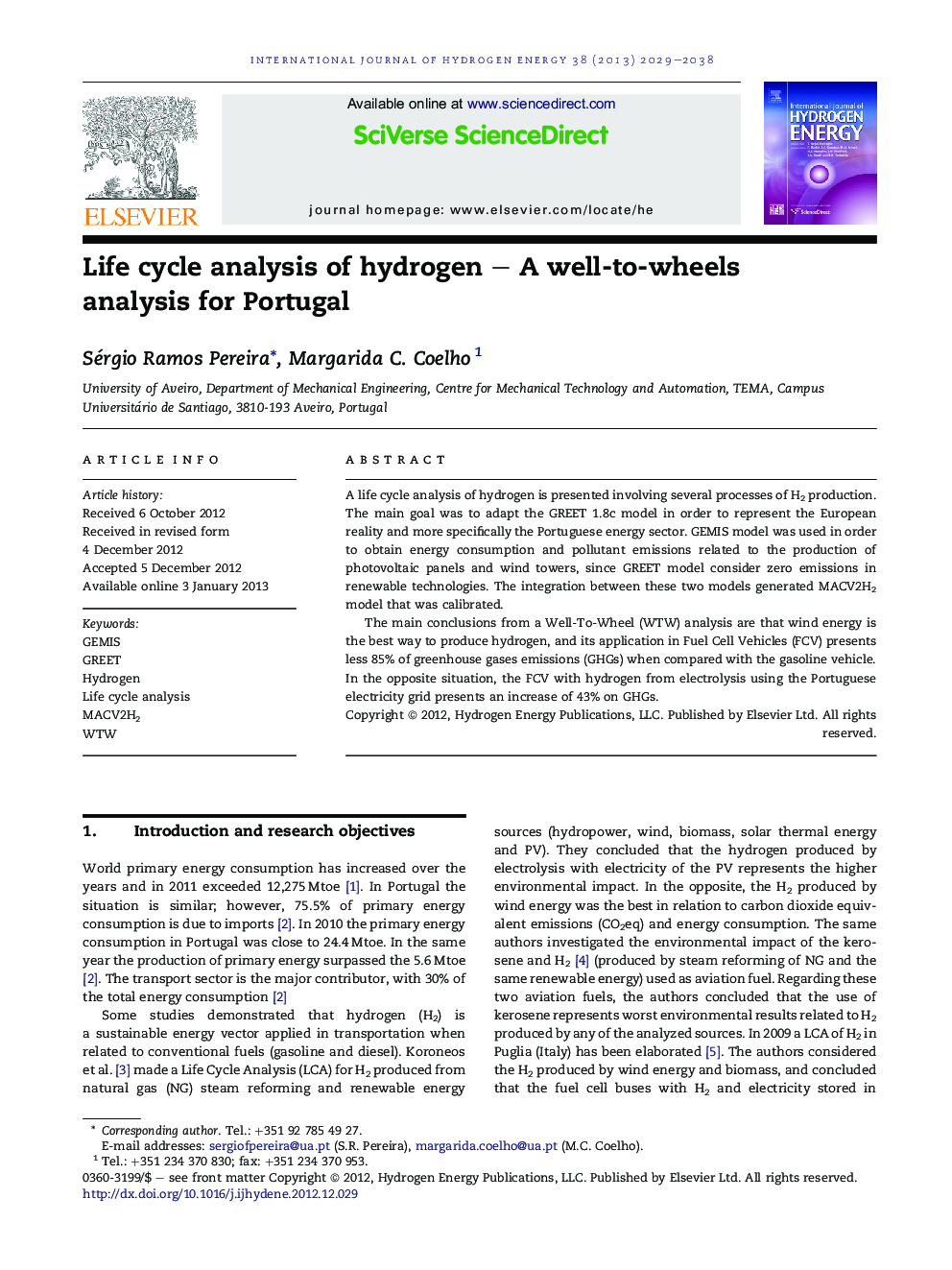| کد مقاله | کد نشریه | سال انتشار | مقاله انگلیسی | نسخه تمام متن |
|---|---|---|---|---|
| 1274067 | 1497540 | 2013 | 10 صفحه PDF | دانلود رایگان |

A life cycle analysis of hydrogen is presented involving several processes of H2 production. The main goal was to adapt the GREET 1.8c model in order to represent the European reality and more specifically the Portuguese energy sector. GEMIS model was used in order to obtain energy consumption and pollutant emissions related to the production of photovoltaic panels and wind towers, since GREET model consider zero emissions in renewable technologies. The integration between these two models generated MACV2H2 model that was calibrated.The main conclusions from a Well-To-Wheel (WTW) analysis are that wind energy is the best way to produce hydrogen, and its application in Fuel Cell Vehicles (FCV) presents less 85% of greenhouse gases emissions (GHGs) when compared with the gasoline vehicle. In the opposite situation, the FCV with hydrogen from electrolysis using the Portuguese electricity grid presents an increase of 43% on GHGs.
► We made a life cycle analysis of hydrogen comparing different production processes.
► We developed a MACV2H2 model with a conjugation between GREET and GEMIS models.
► Regarding the hydrogen production, the wind power is the best solution.
► Fuel cell vehicles with gaseous wind hydrogen present less 85% of greenhouse gases.
► FCV with hydrogen produced by Portuguese electricity grid present the worse results.
Journal: International Journal of Hydrogen Energy - Volume 38, Issue 5, 19 February 2013, Pages 2029–2038